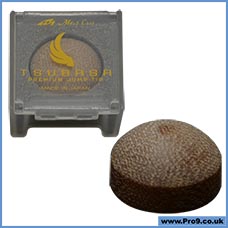|
|
 |
The Pro Shop |  |

NEW: Buy 2 items (or
more) and get a free
upgrade to 1st Class
UK postage.
The One-Rack
By King Shim

Elkmaster Tips
9mm - 15mm

Full Bridge
Telescopic

Dr. V Titlist
Tip Tool

Predator Virtuoso
No Wrap

Gordian Knot
Limited Edition (125)

Katana 1 KATXS1
Performance Shaft

Cue Duo
Back in stock!

Spirit Level
Table Fitter Precision

Multi Scuff
Tip shaper tool

Cuetec AVID
SURGE Break Shaft

Predator
P3 Aura

Cue Silk
Shaft Polish

Sil Kleen
Shaft Cleaner

Predator LE
Double Butterfly

Zan Jump/Break
Double Face

Cuetec Pro Line
3x5 Hard Case

Mezz AD-3
Sorry - Sold Out!

Aramith BLACK
Alternate 5 & 13

Jacoby
Monster Crush

Caiden
Fighter Tips

Abrado
by Longoni

Triple 60
Hyper Jump Carbon

Silver Cup
Billiard Talc

Tiger
Pro Series Glove

Predator Urbain
Full Houndstooth

Replacement Parts
Dynamic II and III

Vanquish Mach 1
Carbon Break Cue

Predator Roadline
30th Anniversary Gold

Predator Roadline
30th Anniversary Gold

KODA
Slip-on Rest Head

McDermott Cases
Replacement Strap

Predator SP2
Purple Metallic

Z9 Cloth
Ocean Blue/Titan Grey

Jacoby
Monster Crush

Ko Brothers
Billiard Chalk

Predator Legacy
2x4 & 3x5 Cases

Predator Legacy
Limited - Order Now!

Ko Cue Tips
Made In Japan

Bounty Hunter
10 in 1 Repair Kit

Jump Training Ball
by McDermott

O’Min F2
Radial Pool Cue

New - Pre-Order!
Mezz Pro Towel

Predator
Centro Shaft

Cue Extensions
- fits Predator

Predator SP2
Adventura Cocobolo

John Barton
Ultimate Rugged

Predator LE
Sang Lee Series 2

New Tiger Tip
Nitro by Appleton

Predator Virtuoso
Ebony/Malachite

Predator Virtuoso
Cocobolo/Turquoise

Predator Virtuoso
Maple/Thuya/Turquoise

Cuetec Cynergy
SVB Gen 2 White

Cuetec Cynergy
SVB Gen 2 Black

Fury Stinger
Carbon Upgrade

Predator Ball Case
2¼" Ball Size

The Golden 8
Aramith 2¼" Ball

Predator P3
Metallic Grey

Cuetec AVID
Chroma - Crimson

Cuetec AVID
Chroma - Currency

Predator
Shorty - No Wrap

Predator
Shorty + Sport Grip

Bulk Ball Sets
For clubs & leagues!

Predator Roadline
Black & Grey 3x6

Magic Rack
Pro Set - Grey

Predator SP2
Red Metallic 1

Predator SP2
Red Metallic 2

Mosconi Cup
Team USA Ball

Mosconi Cup
Team Europe Ball

Cuetec AVID
Opt-X Teal

Cuetec AVID
Opt-X Lavender

Tiger
Tip Protector

Mezz Tsubasa
Jump Tip

TAOM
V10 - Blue

Cutshots
Perfect Aim Trainer

Super Shot
V8 Mega Bridge

Cuetec Truewood
Mappa Burl

Cuetec Cynergy X
Full Carbon Cue

ProPockets
Free post worldwide!

TheProShop.biz
Free Post in Europe!
Order now! |
| | 
Main Menu |  |
 |  |
RULES: FARGO
Except when clearly contradicted by these additional rules, the General Rules of Pocket Billiards apply.
1. TYPE OF GAME:
FARGO is a game that consists of 10 innings (or frames). The player's game score is the total of the scores for these 10 innings. In each inning, the player scores points until he either misses or succeeds in shooting all 15 balls. Fargo is a challenging game, with aspects of both straight pool and rotation, and is suitable for both beginner and expert players.
2. PLAYERS:
Any number of players can compete.
3. BALLS USED:
A standard set of balls, 1-15, plus the cue ball.
4. THE RACK:
A standard triangle rack is used. The balls are racked at the beginning of each inning for each player. The player may choose to rack his own balls and to place balls in the rack in any order that he believes is to his advantage.
5. OBJECT OF THE GAME:
To score more total points than the opponent(s) in a predetermined number of innings (300 points is the maximum in a 10 inning game).
6. SCORING:
Each inning consists of a "random phase" and a "rotation phase". In the beginning of each inning the player places a coin on the table rail with the heads up (or some other conspicuous marking device may be used, such as a piece of paper with "random" written on one side and "rotation" on the other). Balls are then pocketed in any order (i.e. in "random" order) and they count one point each. At any time during the inning, including before the first ball is pocketed, the player may choose to turn the coin over. This designates the beginning of the rotation phase. After the coin flip, the lowest numbered ball on the table must be contacted first (i.e. the balls are shot in "rotation"). Any legally pocketed balls after the coin flip count two points each. There is only a single coin flip each inning.
7. OPENING BREAK:
At the start of each inning the player breaks from behind the headstring and has a free break (no special balls to cushion or other requirements once the break stroke commences, and there is no penalty for scratches or jumped balls). Any balls pocketed on the break shot or jumped off the table are spotted, and the player begins by taking ball in hand anywhere on the table.
8. RULES OF PLAY:
8.1. Fargo is a call shot game. The player must designate the ball and call a pocket for each shot. He need not indicate kisses, caroms, combinations, or cushions (all of which are allowed). A legally pocketed ball entitles the shooter to continue at the table until he fails to pocket legally a called ball, or until he has pocketed all of the balls.
8.2. The player is entitled to any additional balls that are pocketed on a shot, as long as he pockets legally his called ball; the additional balls count the same as the called ball.
8.3. Initial playing order is determined by lag, or if several opponents are playing, by lot. Shooting order for subsequent innings is determined by the scoring results of the preceding innings - the player with the highest score shooting first. If several opponents are playing, all of the players shoot in order of their partial scores, with the higher players going first. In the event of a tied score the playing order is the same as for the previous inning. When playing on separate tables, or in separate locations as in an internet competition, the player order is determined by the Tournament Director as appropriate and practical for the situation; this includes the option of playing the entire 10 innings and reporting the scores to the Tournament Director at the end of the game.
9. PENALTY FOR FOULS:
There is no point penalty for fouls; the player's inning ends and any balls pocketed on the foul stroke do not count. After the coin flip (i.e. during the rotation phase), contacting first an object ball other than the lowest numbered ball (a bad hit) is a foul
FARGO FAQs
1) Do I have to call my shots?
Yes, see rule 8.1. The ball and the pocket must be designated, the other details are irrelevant, just as in Equal Offense or 14.1. Shots must be called in both the random and the rotation phases.
2) What if I scratch on the break?
See rule 7. There is no penalty for a scratch on the break, or for jumped balls.
3) If an extra ball slops in during the rotation phase, does it count as two points?
Yes, see rules 6 and 8.2. Balls pocketed legally before the coin flip (during the random phase) count one point each, balls pocketed after the coin flip (the rotation phase) count two points each.
4) After I turn over the coin and take a shot in the rotation phase, may I change my mind and flip it back to the random phase?
No, see rule 6. After the coin is flipped, you are committed to the rotation phase for the rest of that inning.
5)If I shoot in 14 balls in the random phase, may I flip the coin to get two points for the last ball?
Yes.
6) Are combinations OK in the rotation phase?
Yes, combinations and caroms are allowed in the rotation phase. The requirement is the same as in 9-ball, namely that you hit the lowest numbered ball first, with the addition that the ball must be designated and its pocket must be called.
7) What are some good strategies?
This depends on the player's skill level. A beginner (say someone who typically scores less than 100 should simply try to pocket all the balls he can randomly; if he gets to a point where he knows a cluster is going to stop the run, or if he runs down to the last two or three balls, only then should he consider flipping the coin. An intermediate player (100 to 200 points) should clear out all the clusters and trouble balls during the random phase, and play as many balls as possible at the end of the run in rotation. An advanced player (over 200 points should break out only the most difficult clusters during the random phase, and he will be able to break out the remaining clusters during the rotation phase; with a lucky break and a good spread of the balls, he may be able to play the entire 15 balls in rotation.
8 ) How do I rack the balls to make the rotation phase as easy as possible?
In general, the corner balls roll the farthest, balls along the sides and the rear of the rack tend to stay together, and the three balls in the middle usually don't roll very far.On the break shot, you want a good spread of the balls to minimize the number of clusters, but not so much scatter that the nearby balls are widely separated. Experiment with both ball position in the rack and various break shots to see what works best for you.
More details from: www.playpool.com
| 
|

PRO9 has established an outstanding reputation as Europes No.1 source for information on American Pool in the UK and Europe.
Upcoming tournament details, prompt match reporting, exclusive images by talented photographers, superb articles by expert pundits, active pool related forums, player profiles and a very sophisticated membership - basically, an incredible information resource for the American style game in Europe.
Since it launched, PRO9 has become compulsory reading, not just for the UKs pool players, but to hundreds and thousands of pool obsessives from around the world every single day.
PRO9s members range from professional pool players, cue-sports enthusiasts, club managers, tournament organisers, pool fans and aficionados, as well as various "movers and shakers" in the cue-sports field, including entrepreneurs in the wholesale and retail sector, as well as magazine editors and television sports promoters.
Growing more and more popular every single year, PRO9 is the best placed vehicle for the promotion of your pool club, billiards brand, associated products, services and opportunities in the truly massive pan-European billiard market.
If you qre reading this, you should check out www.Pro9.co.uk for yourself!
Please use these logos and text in your links to www.Pro9.co.uk - thank you.

Forum rules: No advertising, no links to businesses/shops/eBay, no swearing, respect our sponsors and each other, no hate!

Flag counter installed Monday 11 November 2013
All logos and trademarks in this site are property of their respective owner.
The comments are property of their posters, all the rest © 2006-2020 by Big Dave at Pro9.co.uk.
This web site was made with myPHPNuke, a web portal system written in PHP.
myPHPNuke is Free Software released under the GNU/GPL license.
Anyone read this bit down here???
You can syndicate our news using the file
backend.php or ultramode.txt
|
|
|
|
|
Page took 0.045877 seconds to load.
|







